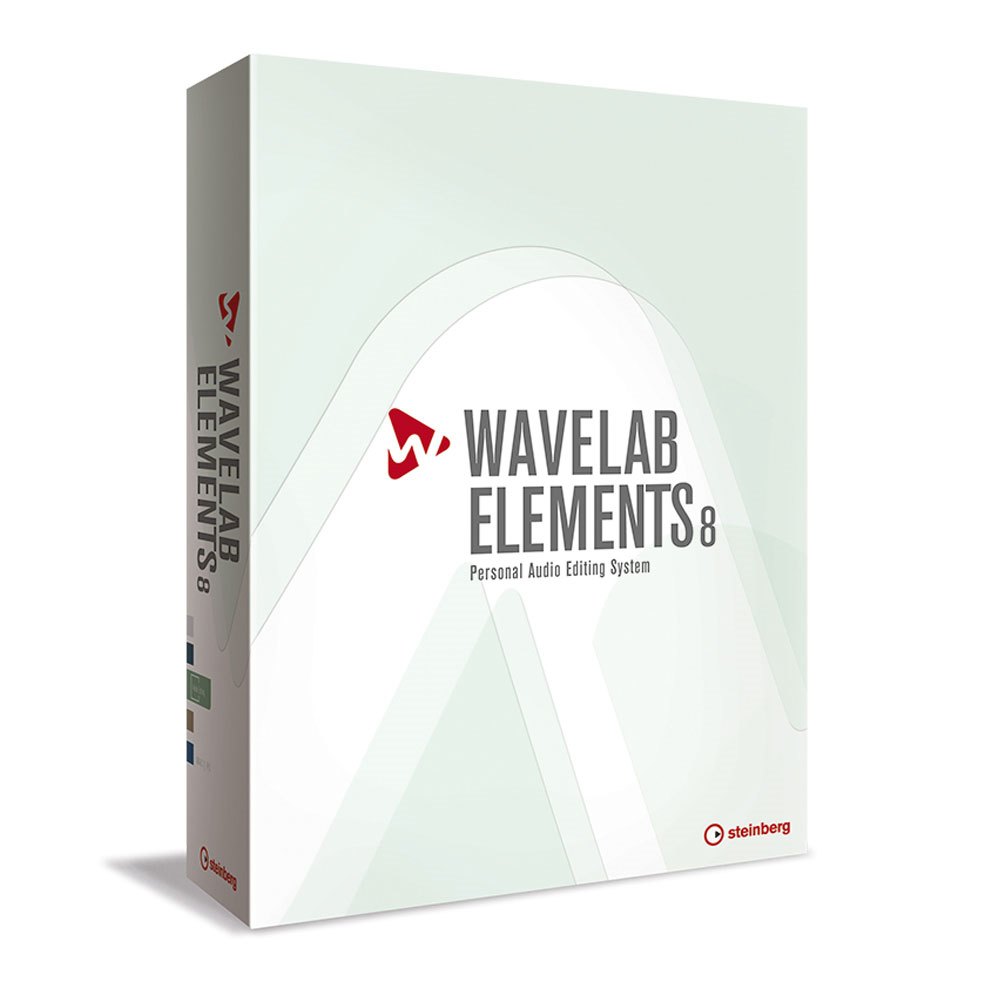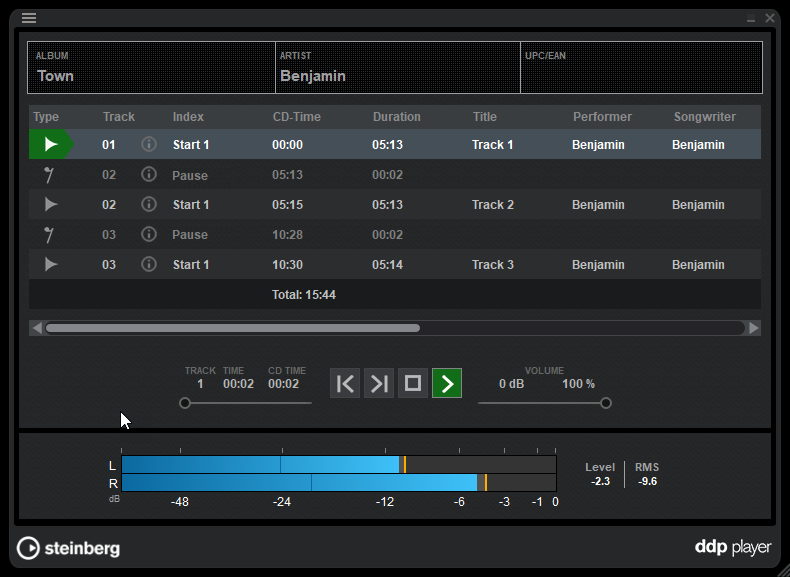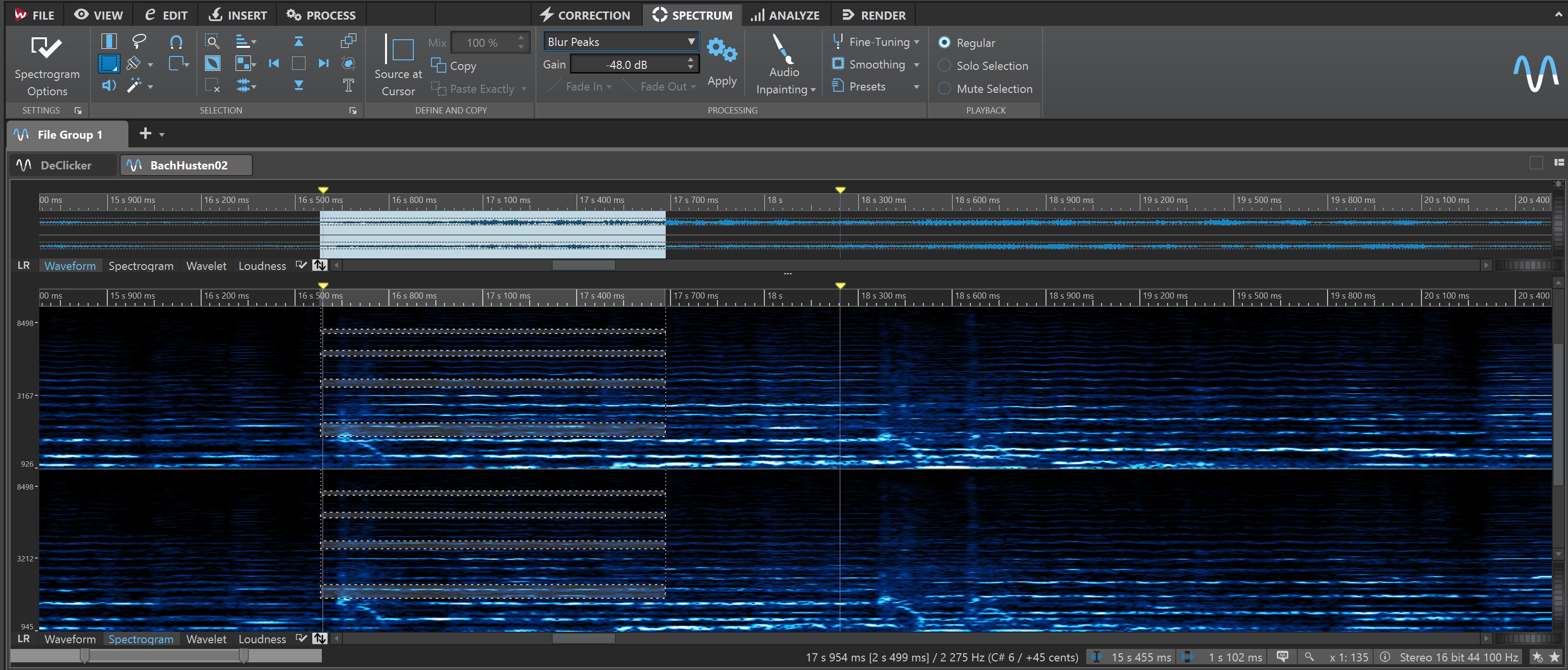

It’s just my opinion but since I usually send out multiple DDPs with DDP Player per day (when you consider revisions), I can’t imagine doing it with Steinberg DDP Player at this time. Yes it’s free, but I don’t think it really adds much value to WaveLab in its current state, especially when you consider how solid, impressive, and affordable HOFA DDP Player Maker is. I honestly haven’t given the Steinberg DDP Player much of a workout because of these things and it sounds like not many other people have either or this would probably been discovered sooner. I’m sure that only a minority of my clients actually burn a CD-R from the HOFA DDP Player I send but it’s certainly nice for clients to have that option. One major thing the DDP Player is missing is the ability to burn a CD. It actually has a nice GUI but it doesn’t feel like a solid effort behind the scenes. There also isn’t a really clear way of distributing it to clients and who knows if it’s been updated since initial release.
Wavelab 6 ddp mac#
Overall, though, WaveLab remains an excellent product, with that long awaited Mac support boding well for its future.IMO the Steinberg DDP Player is not ready for primetime for a few reasons. Also, Mac users used to the swish look of Logic will probably find WaveLab 7 a bit drab, and we feel that the fonts and colours should be smartened up in future updates.įinally, although we feel that the workspaces considerably improve workflow, the depth of features and plethora of icons could still be impenetrable to some new users. So, any downsides? Inevitably, the focused OS support will annoy some, although we tried it using OS X 10.5.8 and had no problems. From nifty visualisations like the 3D Frequency Analysis and Oscilloscope, through to creative options such as effects morphing between clips and more practical stuff like flagging 'errors', such as digital clipping and clicks, WaveLab could never be accused of lacking functionality. If you're new to WaveLab, it's worth us pointing out that there are 15 years' worth of cool features stuffed away in there.
Wavelab 6 ddp plus#
The DIRAC 2.2 timestretching is impressively quick and sounds excellent, plus the Master Effects section now includes a gain-compensated 'smart bypass', which is something of which we strongly approve.

Wavelab 6 ddp full#
Of the new stuff, the Sonnox Restoration plug-ins demonstrate good pedigree, although they're simpler, both visually and in feature-set, than the full Sonnox Restore editions.Īlso surprisingly good is the Batch Processor, which now lets you limit the CPU resources (number of cores) that it uses - that's great for background processing. Combined with the option to drag files (or selections) between workspaces, WaveLab 7 is probably the most flexible environment we've used. You'll also find you can have multiple workspaces of the same type open.

For example, the floating switcher bar enables quick movement between workspaces, plus opening of files. In use, this all adds up to a better experience.

So, you can now master and transfer electronically to the manufacturer without the need to burn discs. This revamp improves stability and also supports DDP (Direct Description Protocol). WaveLab 7's disc-burning engine is all-new.
Wavelab 6 ddp Offline#
There are 13 offline processes that can be applied too. These deal with hiss, pops/clicks and hum respectively, and are available as inserts in all workspaces (including Batch). In addition there are 15 other plug-ins, including three restoration tools from Sonnox: DeNoiser, DeClicker and DeBuzzer. Cubase users will recognise the RoomWorks reverb plug-in, while Nuendo's PostFilter is also here. There is some functional crossover between the two (both have ten master plug-in insert slots), and you can drag files between them, but in practical terms, they suit different jobs.Ĭomplementing the four main workspaces is the Control Window, designed for sub-hosting certain information (meters, for example), and most useful for those with two displays.Īs you would expect, WaveLab 7 includes new plug-ins and now features over 30 VST3 effects from Steinberg's DAWs. The Batch Processing and Podcast workspaces are quite task-specific, while Audio File and Audio Montage both deal with audio file editing, but from slightly different perspectives.Īudio File is for simple offline editing of individual files, while Montage features more complex layering of tracks (potentially over 1000) and incorporates more flexible real-time effects. You can save the results as a custom layout, if you like. You can load these up from a number of presets and customise them considerably by adding tabbed and floating windows, as well as rescaling and re-jigging the various elements. In the four years since WaveLab 6, Steinberg have been busy not only developing for OS X, but also pulling together existing WaveLab features into four dedicated workspaces.


 0 kommentar(er)
0 kommentar(er)
